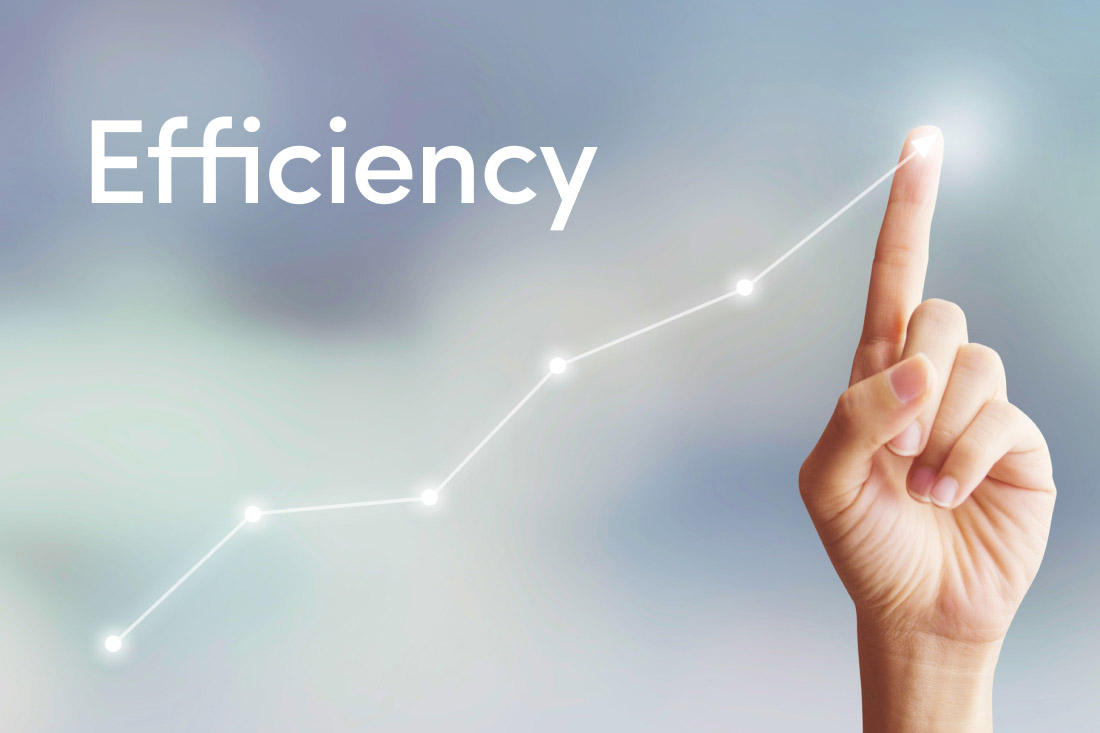For business leaders today, efficiency isn’t just about doing more with less. It’s about focusing on the right priorities, the right way, at the right time. In today’s fast-moving and data-driven environments, achieving operational efficiency is table stakes.
But many managers find themselves asking: What exactly does business efficiency look like today? And how can we build it into every layer of our organization?
Here’s a comprehensive breakdown of what business efficiency really entails, why it matters now more than ever and which actions help move the needle faster.
What is business efficiency?
At its core, business efficiency is the ratio of output (good or services delivered) to input (amount of time, resources and capital investment). But in practice, efficiency is more than a mathematical equation — it’s a performance mindset.
Efficient businesses don’t just avoid waste. They prioritize agility, automation, focus and accountability. They eliminate friction across teams and processes. And they rely on real-time insights, not guesswork, to continuously improve.
Types of business efficiency
There are several types of business efficiency across industries and organizational types. The most common efficiencies businesses focus on include:
- Return on investment: Focusing on ROI is one way to measure efficiency. For example, paying to post jobs on an exclusive job board could result in a larger or more talented pool of applicants, leading to better revenue in the long run.
- Process efficiency: How well do your internal processes support your business goals? This type of business efficiency involves analyzing inventory management, project management, hiring workflows, customer service processes and more.
- Labor efficiency: Maximizing productivity is a high priority for most organizations today. Leaders use this type of business efficiency to help employees get important work done, more quickly, with fewer resources — without sacrificing quality.
- Financial efficiency: Comparing how much of your organization’s revenue goes to paying expenses shows you financial efficiency. If your organization is more financially efficient, you have more revenue to invest in improving the organization.
- Operational efficiency: Operational efficiency is a measure of how well your organization’s inner operations work. This includes internal department operations and cross-functional integration.
- Eco-efficiency: Many organizations analyze the environmental impact of their operations against eco standards and competitors to determine their eco-efficiency. Focusing on sustainable work practices reduces a company’s carbon footprint while cutting costs and improving its reputation.
- Energy efficiency: Electricity is a top expense for companies, especially those with warehouses or office buildings. Focusing on energy efficiency means finding ways to reduce energy usage, often in production processes, office building heating and cooling or data storage.
Why is business efficiency important?
It’s easy for leaders to get so caught up in day-to-day activities that they don’t take time to evaluate how the business operates and where to make improvements. But improving performance is a key part of business efficiency. By focusing on fixing internal problems, companies reduce waste, reduce costs and improve the employee experience. Even businesses without glaring problems benefit from focusing on business efficiency.
Taking the time to analyze and improve business efficiency brings many benefits, including:
- Cost savings in labor, production and overall operations
- Reduced waste in resources, including time and materials
- Improved customer service
- Better quality products and services
- Improved employee engagement
- Increased productivity
- Reduced employee turnover
- Higher profits and better profit margins
- Better customer satisfaction
7 ways to drive business efficiency
1. Automate routine work
Manual processes slow teams down and increase the risk of human error. Automating repetitive tasks like scheduling, invoicing or reporting frees employees to focus on higher-value work. Start by auditing workflows to find where automation can reduce time and touchpoints for faster execution, greater consistency and more scalable operations.
2. Promote clear communication
Instead of relying on scattered emails or endless Slack threads, establish structured channels and clear norms for how and when to communicate. Encourage open dialogue, but avoid overcommunication that creates noise instead of clarity. Efficient teams communicate with intention.
3. Shorten meetings
Long meetings stall productivity and stifle collaboration. Replace drawn-out sessions with shorter, more focused check-ins that prioritize decision making and accountability. Ensure meetings include clear agendas, defined outcomes and assigned next steps to keep projects on track. Or consider having fewer meetings overall to give employees more time to focus on work that matters.
4. Encourage focusing on one task at a time
Encourage employees to work on one task at a time by minimizing distractions and setting clear priorities. Multitasking makes people feel less efficient while dividing attention and diluting results. Workload visibility, flexible scheduling and designated deep work time are great ways to support focused effort, which means higher output, better quality and lower stress levels.
5. Build process consistency
Inconsistent workflows breed inefficiency. Whether it’s onboarding new hires or closing sales deals, standardize processes wherever you can. Then revisit them regularly to refine and adapt as your workforce changes.
6. Foster cross-team collaboration
Cross-team collaboration busts silos and increases efficiency. It also shows teams how their work connects to broader business goals, and where overlaps or dependencies lie. Dashboards, shared KPIs and collaborative planning all reduce redundant efforts and delays.
7. Monitor, iterate, repeat
Efficiency is never finished. What works today might not work next quarter or next year. Build a feedback loop and use data to drive decisions for the long term. Encourage teams to experiment, learn, iterate and share success in creating efficiency.
Improve business efficiency with ActivTrak
Efficiency is more than a business tactic. It’s a mindset you must embed in your company culture. The most efficient companies aren’t always the ones with the most resources. Rather, they move with focus, intention and insight. The best way to understand and target business efficiency is to start with data.
Looking to gain a more holistic view of your company’s business efficiency? That’s where ActivTrak comes in. View employee productivity metrics, performance data, technology use and workflows on intuitive dashboards to make informed decisions. It’s how more than 9,500 organizations improve processes with insight instead of guesswork. Request a free demo to find out how ActivTrak helps you improve business efficiency today and in the future.





